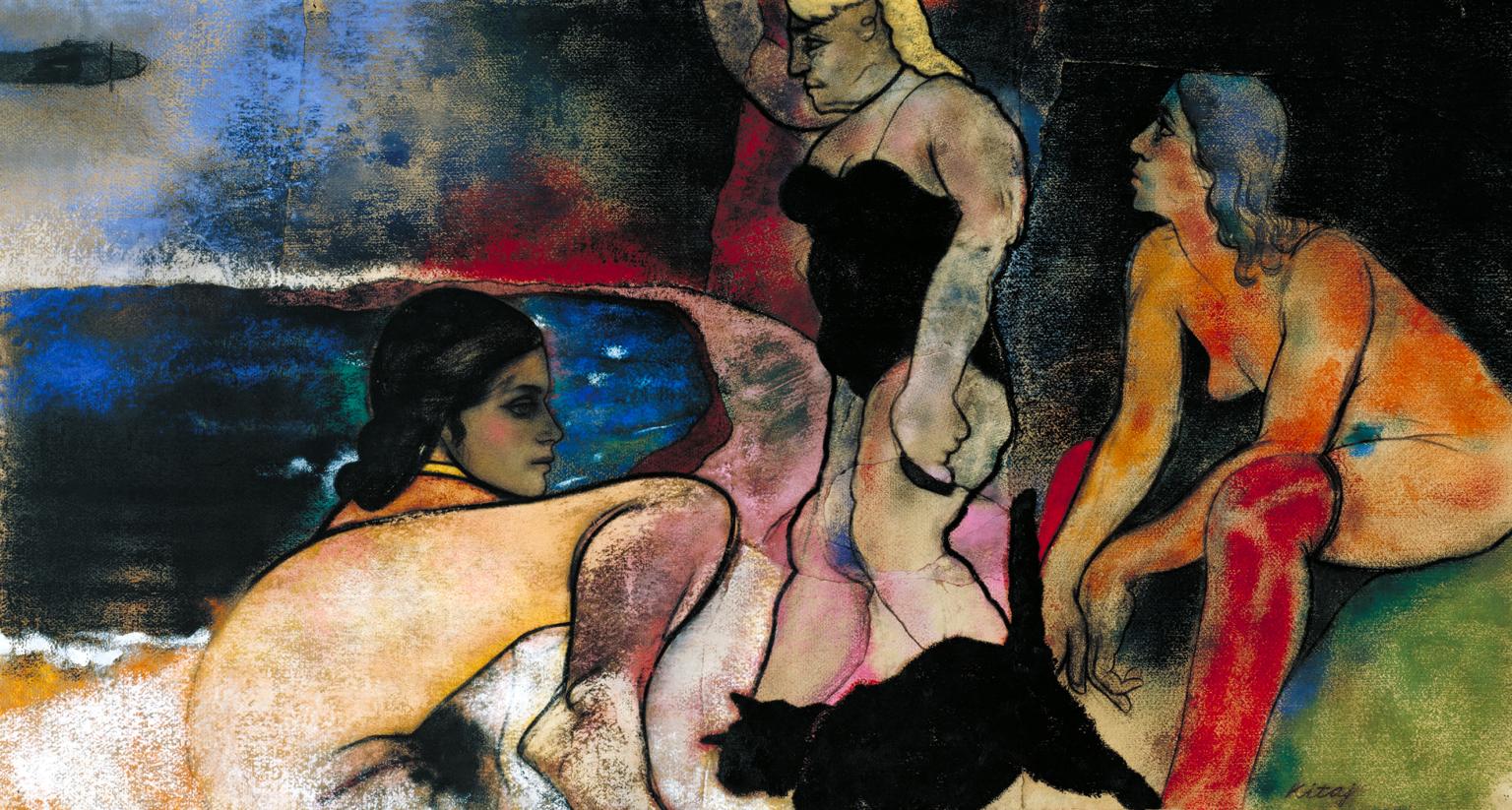
Are you allergic to water? Do you hate the sight of linseed oil? Or are you just fed up?!
If you answered “Yes!”, why not try pastel painting?
You really, really just need to get your thumb, get your forefinger, and clench them around a little lump of colour, wiggle your hand over a piece of delicately textured paper, and let it all out! Wiggle free! Wiggle free, I tell ya!
*
Some of the most enigmatic paintings of our time have been made with this medium. Soft pastels have a unique suitability to the capturing of the dreams and nightmares of Morpheus’ land where intangible objects, alternate visages and crumbling immateriality bug you into the waking day. R.B. Kitaj and Paula Rego saw this potential! Do you? In the less verbose world, pastels are a robust and unfussy alternative medium to watercolour…
Generally speaking, I don’t touch pastels, in fact, until recently I held the view that I hated them, but that was when I was young and prone to having ill-conceived views. What do they say? “You’ll understand when you’re older”, that’s what! Well, I’m two weeks older today! I used to be just twenty-four, now I’m twenty-four and a bit more, and so I understand! This change in my artistic sensibility followed a trip to the Oxfordshire countryside where I decided, quite radically, not to take my watercolours, and instead take my great aunt’s old pastels, with all the colours neatly cordoned off by card inside a delectably vintage Fortnum and Masons truffle box. She was a lady of good taste.
The results were astonishing, not just my obviously marvelous painting, but the revelation that pastels were really something! In all seriousness, looking at my picture you couldn’t tell, but looking at the work of R.B. Kitaj and Paula Rego you can see the power of the medium. In Kitaj’s ‘The Rise of Fascism’ solid areas of immensely deep prussian blue dissipate into cloud-like areas of lightness culminating in an altogether bewildering collection of textures and colour. In Paula Rego’s work, her heavy pastel work creates a corporeal image of skin perhaps more fleshy than that of Freud. Indeed, Rego, who turned to pastels in 1994 remarked that using them was “like painting with your fingers” and that “the changing it, the pushing it around, shoving it, makes it come alive”. This tactile quality is one of soft pastels greatest draws. These two artists perfectly illustrate the versatility of the medium and its textural dynamism, the varied effect of thick and thin, the difference between being scraped onto the page, to being softly blended in, the mystery of the layered colour.
Different brands of pastel offer different qualities. Sennelier Extra Soft ‘l’ecu’ pastels are like painting with dry butter (if you can imagine such a thing – I need to think of a better metaphor) and the quality of the pigment is unsurpassed. I can safely say, when you look at a turquoise Sennelier pastel you really do have to reevaluate your own sartorial style. It’s like it says to you, “ditch the black, honey”. Anyway, Unison pastels are a little more robust and of similar excellent quality, and they are all handmade in Northumberland. Imagine that! A little place somewhere sweet, where people, all day long, roll little sausages of colour, and get paid for it too, could there be anything better! In contrast, to these two softer pastels, conte crayons offer a hard-edged alternative capable of both sharp lines and smudginess. And indeed, there ain’t nothin’ that says “master draughtsman” quite like a sanguine conte crayon! Safe to say, we have all these pastels in our shop, and the cheap and cheerful ones too!
But what really is a soft pastel? “You ain’t said!” I hear you cry. Well, it is a dry pigment combined with an extremely weak binding agent, nowadays either methylcellulose (a converted starch glue) or gum tragacanth diluted in water, although in the past stale beer, milk, and oatmeal water were used. When all mixed together, the paste is rolled into thick or thin sticks, and then left to air-dry for a few days. Depending on the amount of binder used and the nature of the pigment, the pastel will be harder or softer. You can in fact make your own pastels. Recipes can easily be found online. It is in this simple process that a key advantage of working with pastels can be found. Being essentially pure pigment bound in the slightest amount of binder, the paintings do not suffer those effects of age which are caused by the changes the mediums of other methods undergo. This means that when using pastels and pastel paper of the highest quality, you are creating one of the most permanent forms of painting. This is why pastel portraits from the 18th century look as fresh as the day they were painted.
I will end this blog by saying, you need no water, you need no oil, you only need a smudgy finger.
By Ned Elliott